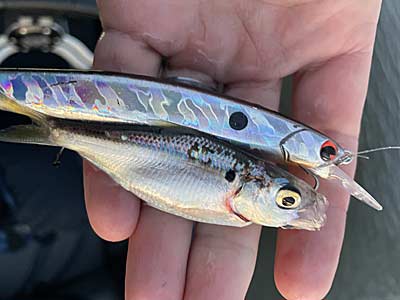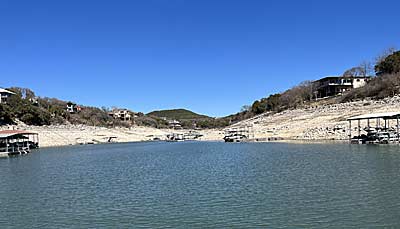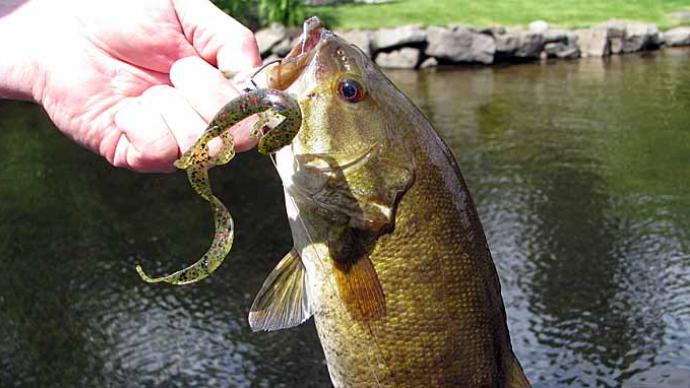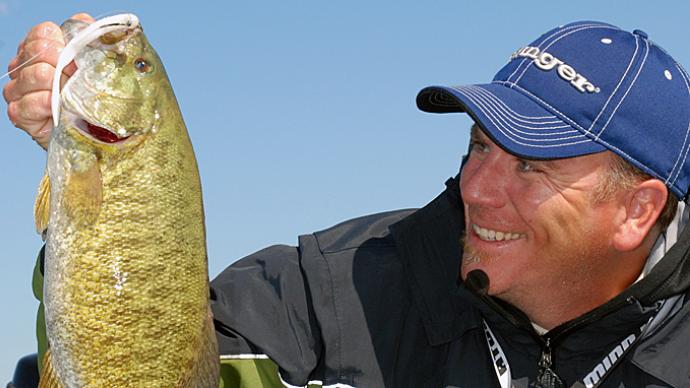
It's here—summer is officially turning to fall. The good news is that cooler weather is on the way, and fishing should be excellent soon, but the bad news is that the fall transition is getting in the way. This short period, as the seasons switch places, is a tough time to go fishing in many regions, as the bass are on the move, and tracking them down and getting them to bite can be difficult.
Thankfully, there are some ways to combat this transitional period and still find success and turn the tables on the fall transition. Use these approaches to catch more bass during one of the most challenging times of the year.
Cover Some Ground
This may seem obvious, but moving quicker than usual can pay dividends. It's as simple as making more casts and increasing your odds of putting your lure in front of a fish, and the best way to do that is to cover some ground, kick the trolling motor up a little higher, and fish faster. This is a straightforward thing you can do to find success during the fall transition: make more casts and present your bait more often.
To fish faster, go with faster-moving lures that allow you to fish quickly. Some of the best for covering water are crankbaits, both lipless and diving versions, swimbaits, spinnerbaits, jerkbaits, and ChatterBaits. Other good choices are topwater baits, either walking baits or a buzzbait, both of which are good during the fall transition and will continue to be effective until the water cools substantially. These reaction lures generally cast far and are meant to be fished with a faster retrieve, allowing you to fish quickly and effectively.
Once you catch a fish, it can be time to slow down and pick apart the area with slower-moving lures and those fished along the bottom, such as jigs and finesse worms. A good location holding one willing bass will likely have even more swimming around, so work the area thoroughly before moving on to the next spot.
Stick to the Obvious
Some of the most apparent fishing locations can also be the best, especially when the fishing is tough during the fall transition. These include areas like main lake points, marinas, bridges, riprap banks, and places where anglers fish frequently. They are so popular because they nearly always hold fish, and that is why they can save the day during the fall transition.

Another obvious area to check out is anywhere with current, either rivers or creeks flowing into a body of water or below dams. This moving water attracts fish that are only there to feed, and it can be a great way to catch a pile of bass, even when the rest of the lake poses more of a challenge.
Also, the annual migration of shad and other nomadic baitfish leads them into creeks and backwaters. Bass follow them like clockwork every fall, and these feeder creeks, big and small, will attract baitfish, and the bass will likely be right there with them.
Pay Attention to the Little Things
Monitoring water conditions such as clarity, water level, and temperature is always a good idea, but it can be crucial this time of year. These slight changes to the underwater environment can help you immensely during the fall transition.

The water level is one factor that changes throughout the year on many bodies of water, and typically, the water is at its lowest point in the fall. This is done for many reasons, such as irrigation or natural evaporation. In other fisheries, the water is purposely lowered to make room for winter snow and rain. Since the water around the fish is shrinking, it's wise to take note of these areas and seek out places less affected by changing water, such as steeper banks or bluff walls.
The temperature of the water and clarity can also be factors, as the changing seasons will also cool certain sections of the lake first. These cooler areas may have more active fish than the rest of the body of water simply because the fish are further along in the process than in other areas. Unlike spring, when warmer water areas are better, sometimes seeking cooler water can help you catch more bass in the fall. Water clarity also changes the water temperature as dirty water often retains more heat and stays warmer longer.
Temper Your Expectations
When fishing during the fall transition or any challenging time of year, it's always a good idea to remind yourself that things will not be easy and that each bite is essential. The fishing will be much better in prime fishing windows throughout the year, and the bass are everywhere you go and eating everything you throw at them some days. That's not always the case in early fall.
Fishing can be a little tricky as the bass are moving and adjusting to the new season, but you can still catch them. It's also rewarding to realize that you are unlocking the puzzle one clue at a time. Each bite and fish during that search is a clue and can often be replicated in other areas of the lake, making the fall transition a great time to develop a pattern that works throughout the fishery.
Fishing during the fall transition can be challenging at times, but there are always ways to catch bass with the right approach. These strategies help turn a tough time of year into a chance for success.




